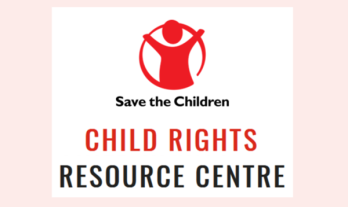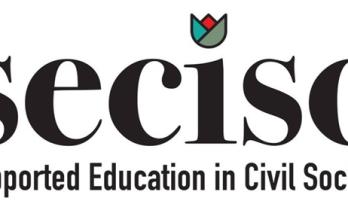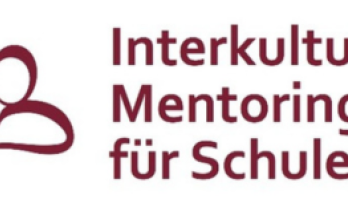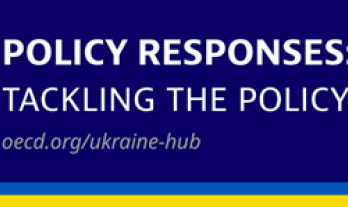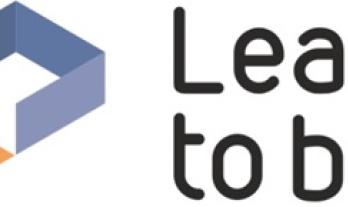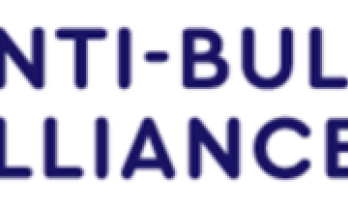3. Support to learners
Introduction
Learners’ needs should be at the centre of education. All learners are entitled to high-quality education, a relevant curriculum, appropriate assessment, ‘equivalent’ and valued learning opportunities. Schools should provide an environment that accommodates learners’ diversity, including varied learning needs, to maximise each young person’s potential. Quality education should be designed to fit learners rather than requiring them to fit into an existing system. This should ensure that they engage with the learning process, and see a clear purpose for their studies. These are important incentives to remain in school.
It is important that potential learning difficulties are identified during early childhood education and care and that adequate support is provided even before children enter primary school. Whether diagnoses are made at the prevention stage or later, schools should be able to rapidly identify difficulties or signs of cognitive, emotional and behavioural disengagement, and be ready and equipped to respond. A support framework should be in place, comprising a wide range of diversified measures for different groups of learners. Three levels of intervention may be identified:
- Universal support – for all students
- Targeted support – for groups of students at moderate levels of risk or need
- Individual support – intensive intervention at chronic or extremely high levels of risk or need
The support framework for learners should be holistic and comprehensive, addressing all dimensions of a learner's life: academic, emotional, health, etc. There should be an emphasis on building trust, emotional bonds and motivation for education. Support should be inclusive and cautious of possible stigma associated with being designated as an at-risk learner.
Targeted and individual interventions for learners at risk will be more effective if carried out by multidisciplinary teams (in schools or by bringing external professionals into schools), and with the involvement of all those interacting with the learners, be they family members, siblings or volunteers. An individual support plan, agreed with the learner and his/her family, can help to set clear and achievable goals to address issues and monitor progress.
An example of a diversified (three-tier) support system for learners: Finland
The Finnish basic education system has been based on the philosophy of inclusion for a long time. Basic education is the same for all. There is no streaming or tracking, but children are individually supported to successfully complete their basic education. Amendments to the National Core Curricula for pre-primary and basic education (2010) include a new systematic way of organising support. The focus is on earliestpossible supportin order to prevent the emergence and growth of problems.
Support for growth, learning and school attendance is organised in three categories: general, intensified and special support.
Everyone is entitled to general support. It is a natural part of the everyday teaching and the learning process. Intensified and special supports are based on multi-professional teams’ careful assessment and individual learning plans to address long-term needs.
If general support is not enough, an individual assessment is administered and a plan for the intensified support within the pupil welfare group of the school is developed. Following this, a learning plan is drawn up.
If intensive support is not enough, new and more extensive pedagogical statements are developed. The education provider collects information from teachers and the school’s welfare group. Based on this information, the education provider makes an official decision concerning special support. Following this decision, an inclusive individual education plan is created.
Find out more:
- Downes, P., 2011, Multi/Interdisciplinary Teams for Early School Leaving Prevention: Developing a European Strategy Informed by International Evidence and Research, NESET research paper.
- ECORYS, Preventing early school leaving in Europe: Lessons learned from second chance education, Publications Office of the European Union, Luxembourg, 2014.
- Eurydice and Cedefop, Tackling Early Leaving from Education and Training in Europe: Strategies, Policies and Measures, Publications Office of the European Union, Luxembourg, 2014.
- Nouwen, W., Clycq, N., Braspenningx, M., and Timmerman, C., Cross-case Analyses of School-based Prevention and Intervention Measures, Project Paper 6, RESl.eu Project, Centre for Migration and Intercultural Studies, University of Antwerp, 2016.
Additional reading:
- Dynarski, M., Clarke, L., Cobb, B., Finn, J., Rumberger, R., and Smink, J., Dropout prevention: A practice guide, National Center for Education Evaluation and Regional Assistance, Institute of Education Sciences, U.S. Department of Education, Washington, D.C., 2008.
- Lamb, S, Markussen, E, Teese, R, Sandberg, N, Polesel, J (eds.) School Dropout and Completion: International comparative studies in theory and policy, Springer, Dordrecht-Heidelberg-London New York, 2011.
- Rumberger, R.W. ‘Why students drop out of school’, in Gary Orfield (Ed.), Dropouts in America: Confronting the graduation rate crisis (pp.131-155), Harvard Education Press, Cambridge, MA, 2004.
- Rumberger, R.W., and Lim, S. Why students drop out of school: A review of 25 years of research, California Dropout Research Project, UC Santa Barbara, 2008.
Chapters
3.1. Learners' participation in school life
ExpandWhole-school approaches involve attention to the overall school climate. A safe and caring learning environment supports positive relationships for and between teachers, school staff and learners. For instance, physical settings that are safe, welcoming and stimulating, as well as sports and regular physical activities for all learners are important. Schools may invest in conflict management within common school spaces to promote a culture of dialogue and diversity. These learning and contextual conditions help create a positive climate and a sense of belonging for all learners.
All learners – but particularly those with learning difficulties or disabilities, or who face personal, social or emotional challenges – need easy access to teachers and other professionals who can support their educational and personal development. Counselling and mentoring may provide career guidance, while cultural and extra-curricular activities are important to broaden their social and personal skills.
A wide range of support and counselling services that are based on a comprehensive view of the individual may also include social and family-related services. Consideration should be given to the impact of critical life events (including traumatic events) on the personal development of a young person. This should include emotional and psychological support, to be provided in the school or in connection with local agencies and services. Such support should focus on building the learner’s self-confidence, trust and motivation, enabling the young person to think more positively about his/her future. Peer coaches or mentors may also be effective in providing socio-emotional support.
Teachers and other school staff should be given opportunities for professional development so that they may help learners who need additional emotional support. They should know and have access to channels of communication in order to share personal information about learners and get access to additional support for those learners. The emotional well-being of staff should also be supported.
Surveys and evaluations of the school climate should be used deliberately and systematically and should involve all the staff and learners in the school. Learners should be involved in analysis and planning.
Schools should also have anti-bullying strategies in place. These strategies should address all forms of bullying, including cyberbullying, in order to ensure a safe environment and effectively respond to violations of children's rights. There is extensive research available on effective methods of tackling bullying and victimisation in schools. At the same time, measures for combating degrading treatment and bullying should be based on the school’s own circumstances.
Research evidence: Sweden
This evaluation of measures to prevent and remedy bullying draws on qualitative and quantitative data from 39 schools. It follows eight anti-bullying programmes: the Farsta Method, Friends, Lions Quest, the Olweus Programme, SET (Social Emotional Training), School Comet, School Mediation, and Second Step.
No school used just one programme, but rather a combination of measures and programmes. They found that different measures had different effects for boys and girls, and for social or physical bullying. No single programme had a dramatic positive effect. Rather, schools were more successful when they took a systematic approach using a combination of measures. The Evaluation reports on school experiences with the different programmes and the extent to which they contributed to a reduction in bullying.
Swedish National Agency for Education, Evaluation of anti-bullying methods (2011)
Find out more:
- 8th European Forum on the Rights of the Child, The Role of Child Protection Systems in Protecting Children from Bullying and Cyberbullying, Brussels, 17 and 18 December, 2013.
- Farrington, D.P. and Ttofi, M., School-Based Programs to Reduce Bullying and Victimization: A Systematic Review, The Campbell Collaboration, Oslo, 2010.
- Nouwen, W., Clycq, N., Braspenningx, M., and Timmerman, C., Cross-case Analyses of School-based Prevention and Intervention Measures, Project Paper 6, RESl.eu Project, Centre for Migration and Intercultural Studies, University of Antwerp, 2016.
- Swedish National Agency for Education, Evaluation of anti-bullying methods, Report 353, Skolverket, Stockholm, 2011.
- Unicef, Rights Respecting Schools Award online platform
Additional reading:
- Anderson, A. R., Christenson, S. L., Sinclair, M. F., and Lehr, C. A., ‘Check and Connect: The importance of relationships for promoting engagement with school’, Journal of School Psychology, Vol. 42, 2004, pp. 95–113.
- Downes, P., ‘The neglected shadow: Some European perspectives on emotional supports for early school leaving prevention’, International Journal of Emotional Education, Vol. 3 No. 2, 2011, pp. 3-39.
- Gresham, F. M., ‘Evidence-based social skills interventions: Empirical foundations for instructional approaches’, In Shinn, M.R. and Walker, H.M. (Eds.), Interventions for achievement and behavior problems in a three-tier model including RTI., National Association of School Psychologists, Bethesda, MD, 2010, pp. 337-362.
- Scheel, M., Madabhushi, S., and Backhaus, A., ‘The academic motivation of at-risk students in a counseling prevention programme’, The Counseling Psychologist, Vol. 37, 2009, pp. 1147-1178.
- Sinclair, M. F., Christenson, S. L., and Thurlow, M. L., ‘Promoting school completion of urban secondary youth with emotional or behavioral disabilities’, Exceptional Children, Vol. 71 No. 4, 2005, pp. 465–482.
- Skinner, E.A. and Pitzer, J.R., ‘Developmental Dynamics of Student Engagement, Coping, and Everyday Resilience’, in Christenson, S.L., Reschly, A.L., Wylie, C. (Eds.) Handbook of Research on Student Engagement, New York, Springer, 2012, pp. 21-44.
- White, S. W., and Kelly, F. D., ‘The school counselor’s role in school dropout prevention’,. Journal of Counseling & Development, Vol, 88, 2010, pp. 227–235.
3.2. Career guidance and support
ExpandLearners need to feel ownership of their learning and be given the opportunity to voice their views. Being active in decisions and activities of the school increases a sense of belonging and may help learners to develop leadership and social skills. Proactive efforts to engage marginalised learners and ensure their voices are heard are essential.
All Member States include some degree of provision for child participation within their general Education Act or Code. In many countries, children’s participation is promoted within schools through formal mechanisms, such as school councils, or targeted programmes. There is however a gap between legislation and practice and learners do not always have a real influence in decisions regarding fundamental aspects of their school experience and learning.
There should be sufficient time for classroom dialogue, as well as for discussions in the context of student councils or consultations on issues related to school life and to the learning experience. Learner contributions should be fully considered in subsequent decisions. Successful practices include:
- interactive and dialogic teaching and learning (for example in small groups), which increases opportunities for learners to talk with greater ease about issues impacting on their learning;
- school projects that involve the entire school community (such as ‘green school’ projects), and give learners leading roles in key aspects;
- surveys, questionnaires and other methods of consultation to seek the views of learners; and,
- meaningful participation of learners in school decision-making processes through representation on school boards/council and in school evaluation and improvement processes.
Some country examples of learners' participation in school life
- The Swedish upper secondary school curriculum states that: “…students should be able to exercise influence over their education. They should be continuously encouraged to take an active part in the work of further developing education and be kept informed of issues that concern them. Students should always have the opportunity of taking the initiative on issues that should be treated within the framework of their influence over education.” (Swedish National Agency for Education, Curriculum for the upper secondary school, Skolverket, Stockholm, 2013, p. 11)
- In England, students can send comments directly to the National Inspectorate (OFSTED).
- In Portugal, students participate in the general school council that is responsible for setting guidelines for school governance and provides school evaluation. Each class elects two delegates.
- In France, upper secondary school students elect delegates to a student council, which in turn elects delegates to regional and national student councils.
- In Spain, students lead a process of consensus building of school rules, leading to a communitarian approach to prevent and fight back against any type of violence at the school.
Find out more:
European Commission, Evaluation of legislation, policy and practice of child participation in the EU, Research summary prepared by ECORYS, Publications Office of the European Union, Luxembourg, 2015.
OECD policy papers on supporting Ukrainian educators and recognition of prior learning
3.3. Curriculum and learning paths
ExpandCareer guidance and support should be integrated into the curricula from the earliest stages of education. Research suggests that students who have a career plan are more likely to remain in school and engage more with their education. It may be developed separately or embedded in the curriculum, for example, within the context of several different subjects. Effective approaches tend to combine a wide range of curricular and extracurricular activities. These may include work experience programmes, job shadowing, career games, or taster courses that can support in both mainstream and alternative education (such as work-based vocational education and training).
Teachers have an important role to play in encouraging learners to pursue their interests, and to acquire skills and competences relevant to their career aspirations. Effective career education will also need to engage a range of stakeholders (school counsellors, parents and employers).
A 2016 study on alternative learning pathways by the Reducing Early School Leaving in Europe (RESL.eu) Research Project showed that work-based learning approaches compensate for the lack of practical learning in general school-based education and can prevent early school leaving. For many students, work-based learning may be more relevant because of the practical and often more mature learning context. Nonetheless, young people are often only reoriented towards work-based learning after a range of negative school experiences and/or academic disengagement. A strong critique of both learners and staff involved in this study was that staff – even specialised career guidance staff – do not always have good knowledge about the work-based learning options available and, therefore, may not provide correct and timely information about the dual learning options throughout students school career.
Find out more:
- European Lifelong Guidance Policy Network (ELGPN), Early School Leaving and Lifelong Guidance, Concept Note No. 6, coordinated by University of Jyväskylä, Finland, 2015 (see http://www.elgpn.eu/publications/browse-by-language/english/elgpn-concept-note-no.-6-early-school-leaving-and-lifelong-guidance/).
- European Commission, Piloting Youth Guarantee - partnerships on the ground, Case study: Helping at-risk youth to prepare and guide them into positive post-school outcomes, Publications Office of the European Union, Luxembourg, 2015.
- European Commission/EACEA/Eurydice/Cedefop,Tackling Early Leaving from Education and Training in Europe: Strategies, Policies and Measures, Publications Office of the European Union, Luxembourg, 2014.
- Nouwen, W., Clycq, N., Braspenningx, M., and Timmerman, C., Cross-case Analyses of School-based Prevention and Intervention Measures, Project Paper 6,eu Project, Centre for Migration and Intercultural Studies, University of Antwerp, 2016.
- Cedefop, Stronger VET for better lives: Cedefop's monitoring report on vocational education and training policies 2010-14, Cedefop Reference Series, No. 98 Publications Office of the European Union, Luxembourg, 2015.
- Elffers, L.,The transition to post-secondary vocational education: Students’ entrance, experiences, and attainment, Ipskamp Drukkers, Enschede, 2011
- Van Praag, L., Nouwen, W., Van Caudenberg, R., Clycq, N. and Timmerman, C., Cross-case Analysis of Measures in Alternative Learning Pathways, Centre for Migration and Intercultural Studies, University of Antwerp, 2016.
3.4. Learning and assessment
ExpandMaking learning relevant to learners' lives is crucial. Relevant and stimulating curricula will assist teachers to create motivating lessons. Curricula should allow personalised forms of teaching and learning, to facilitate the acquisition of knowledge and development of skills and competencies to the best ability of each child, while preserving the quality of the curriculum content and high expectations. Curricula at each stage should be aligned with subsequent levels of education and training or alternative training pathways.
Curricula should allow a variety of teaching methods, including collaborative teaching and learning, on-the-job learning and coaching, which have proven to be beneficial in (re-) engaging and motivating learners and keeping them in education and training. These teaching methods should maintain high quality standards for all learners. Studies show the positive impact of measures that do not include ability grouping or any type of segregation, and to guarantee that the needed resources are allocated appropriately for the diversity of needs in heterogeneous groups (see research reference below). Schools should implement the curricula in line with the needs of their learners, while maintaining high standards and expectations. The focus should be on providing culturally relevant curricula and ensuring that all students are fully equipped with the key competences they will need to avoid further social exclusion.
For learners who are truly struggling with mainstream curriculum, individualised learning paths or alternative education programmes (with teaching methods adapted to facilitate the learning) could help achieve equivalent learning objectives and (re-)integration into education and/or training. Study skills, as well as career guidance and education and other life skills should be fully integrated into the curriculum.
Find out more:
- Braddock, J.H. and Slavin, R.E., Why ability grouping must end: Achieving Excellence and Equity in American Education, Center for Research on Effective Schooling for Disadvantaged Students, Baltimore, MD, 1992.
- Flecha, R., Successful Educational Action for Inclusion and Social Cohesion in Europe, Springer Publishing Company, Heidelberg, New York, Dordrecht London, 2015.
- Wößmann, L. and Schütz, G., Efficiency and Equity in European Education and Training Systems. Analytical Report for the European Commission, European Commission, Brussels 2006.
3.5. Extended and extra-curricular learning
ExpandTeachers should be allowed the flexibility to adapt and personilise teaching to meet learners' diverse needs. Learner-centred approaches, including more active and interactive techniques, such as enquiry- and project-based teaching and learning and cooperative learning have proven to be beneficial. School and class organisation, including the use of space and time, should support the variety of student needs and teaching methods.
Teaching and learning in schools should also allow for a range of appropriate assessments, with a greater focus on diagnostic and formative approaches. Research has shown that timely, specific feedback to help close learning gaps (with learning tailored to specific needs) has a significant impact on learning including for marginalised learners. When they are fully involved in the process, learners are able to track their progress over time and to build their confidence in their ability to succeed. Formative and diagnostic assessment (including student self-assessments and family members' inputs) are powerful tools to raise achievement.
Find out more:
- Black, P. and D. Wiliam, ‘Inside the Black Box: Raising Standards through Classroom Assessment’, Phi Delta Kappan, Vol. 92,2010, pp. 81 – 90.
- De Witte, K., Nicaise, I., Lavrijsen, J., Van Landeghem, G., Lamote, C., Van Damme, J., ‘The Impact of Institutional Context, Educatin and Labour Market Policies on Early School Leaving: A comparative analysis of EU countries’, European Journal of Education, Vol. 48, No. 3., 2013, pp. 331 – 345. doi/10.1111/ejed.12034/
- European Commission/EACEA/Eurydice/Cedefop, Tackling Early School Leaving from Education and Training in Europe: Strategies, Policies and Measures, Publications Office of the European Union, Luxembourg, 2014.
- OECD, Policy Brief: Formative Assessment: Improving Learning in Secondary Classrooms (November), OECD, Paris, 2005.
3.6. Monitoring learners at risk
ExpandExtra-curricular and out-of-school educational activities may either have a strong academic component or a more informal learning and development approach. These activities, when compatible and coherent with educational aims, may provide additional opportunities for young people to 'shine' and can increase motivation and a sense of belonging with the school that they might not otherwise have. Extra-curricular and out-of-school educational activities should be designed to complement curriculum delivery and to maximise learner participation and social inclusion. They may be developed in cooperation with parents, local organisations, services and NGOs and with the involvement of volunteers from the community.
Extra-curricular activities have been found to be beneficial for at-risk students, including a dramatic decrease in school dropout rates. Current research finds that the participation in and feeling of ownership of a school-based extra-curricular activity is sometimes harder to come by for the most vulnerable students, but the rewards for engaging at-risk students in these activities seem to be larger than for others.
Arts and sports, the most common extra-curricular activities, contribute to improved self-esteem and motivation of all learners, and may have the most significant positive impact on students with learning difficulties. This is the case regardless of whether difficulties stem from language barriers, socio-economic or ethnic background, or behaviour.
Some extra-curricular activities ensure learners have the extended time for learning and opportunities outside the classroom they may need. Successful practices include:
- After-school activities such as homework and learning clubs;
- Activities in librarieswhich enhance literacy or support homework;
- Academic and non-academic support and activities offered during weekends or during school breaks; and,
- Mentoring and tutoring programmes in and outside the school.
Find out more:
- EU project eu - Reducing Early School Leaving in the EU online platform
- INCLUD-ED FP6 project, Actions for Success in European Schools, European Commission, Brussels, 2009
- Flecha, R., Successful Educational Action for Inclusion and Social Cohesion in Europe, Springer Publishing Company, Heidelberg, New York, Dordrecht London, 2015
3.7. Targeted support: Language
ExpandLearners may go through difficult periods in their social and/or family lives or may have negative school experiences that throw them off track. Early detection of learning difficulties, socio-emotional distress, or disengagement is vital – before they manifest through school absenteeism, or inappropriate behaviour. Schools need to establish an early warning and monitoring system in collaboration with the family. Effective identification and monitoring should not be seen as a bureaucratic and disciplinary process that only records and responds to incidents of absenteeism or misconduct, but more of a support (warning) system. Learners need to know that they matter and are cared for.
While monitoring attendance and learning progress remain essential, a broader perspective on the learner and his/her particular situation is also needed. Early detection should be based on a comprehensive view of the individual that also includes social, family and emotional factors. Consideration should also be given to the impact of critical life events (including traumatic events) on the young person’s personal development.
Monitoring means keeping an ongoing record of a wide range of aspects, including learners' socio-emotional well-being, sense of school belonging, learning processes, levels of achievement, attendance, behaviour and any other relevant information. These cognitive and emotional processes, although more difficult to monitor, can provide even more timely indications of decreasing school engagement, before this is externalised as truancy and misconduct. Not all of this must be formally recorded, but it can be useful in detecting changes that may indicate factors that are likely to hinder a learner in his or her development and school achievement. Less overt indicators of socio-emotional distress are best picked up by teachers and support staff when they have trusting and caring relations with individual students, and collaborate closely with the learner’s family.
Different methods and routines may be used, but it is essential that identification of at-risk learners be followed by rapid and targeted intervention. Three levels of intervention are:
- Universal support – for all students
- Targeted support – for groups of students at moderate levels of risk or need
- Individual support – intensive intervention at chronic or extremely high levels of risk or need
Identification of distress signals should trigger immediate reaction through a holistic and community-oriented support framework, to assist learners to overcome difficulties and continue on their educational path. Specific interventions need to be accompanied by close monitoring and assessment. These assessments should include hard indicators, such as truancy figures, as well as soft indicators, such as surveys of student well-being and sense of belonging in school.
Find out more:
- European Commission, Early warning systems in Europe: practice, methods and lessons. Thematic Working Group on Early School Leaving, Brussels, 2013.
- European Commission/EACEA/Eurydice/Cedefop, Tackling Early Leaving from Education and Training in Europe: Strategies, Policies and Measures, Publications Office of the European Union, Luxembourg, 2014.
- Juhasz, J., Final report on Crocoos – Cross-sectoral cooperation focused solutions for the prevention of early school leaving project background research, Section II, Tempus Public Foundation, Budapest, 2015, pp. 3- 8.
- Nouwen, W., Clycq, N., Braspenningx, M., and Timmerman, C., Cross-case Analyses of School-based Prevention and Intervention Measures, Project Paper 6,eu Project, Centre for Migration and Intercultural Studies, University of Antwerp, 2016.
Additional reading:
- Baker, D. and Jansen, J., ‘Using groups to reduce elementary school absenteeism’, Social Work in Education, Vol. 22, 2000, pp. 46-53.
- Gresham, F.M., Hunter, K.K., Corwin, E.P. and Fischer, A.J., ‘Screening, Assessment, Treatment, and Outcome Evaluation of Behavioral Difficulties in an RTI Model’, Exceptionality: A Special Education Journal, Vol. 21, No. 1, 2013, pp. 19-33.
- Lehr, C. A., Sinclair, M. F., and Christenson, S. L., ‘Addressing student engagement and truancy prevention during the elementary years: A replication study of the Check & Connect model’, Journal of Education for Students Placed At Risk, Vol. 9, No. 3, 2004, pp. 279–301.
- Licht, B. G., Gard, T., and Guardino, C., ‘Modifying school attendance of special education high school students’, Journal of Educational Research, Vol. 84, 1991, pp. 368-373.
- McCluskey, C. P., Bynum, T. S., and Patchin, J. W., ‘Reducing chronic absenteeism: An assessment of an early truancy initiative’, Crime & Delinquency, Vol. 50, No. 2, 2004, pp. 214–234.
- Reinke, W. M., Splett, J. D., Robeson, E. N., Offutt, C. A., ‘Combining school and family interventions for the prevention and early intervention of disruptive behavior problems in children: a public health perspective’, Psychology in the Schools, Vol. 46, No. 1, 2009, pp. 33-43.
- Sutphen, R.D., Ford, J.P., and Flaherty, C., ‘Truancy interventions: A review of the research literature’, Research on Social Work Practice, Vol. 20, 2010, pp. 161-171.
OECD policy papers on supporting Ukrainian educators and recognition of prior learning
3.8. Targeted support: Migrants, Roma
ExpandMultilingual classrooms are a growing reality in EU countries: more and more schoolchildren have a mother tongue different from the main language of instruction in school and need additional linguistic support. Teaching needs to adapt to various ways of strengthening language proficiency of immigrant learners with different linguistic backgrounds. In multilingual schools and classrooms, students may speak one language at home and another at school; some or all of the students are learning the language of instruction.
There are several types of and objectives for multilingual schools: schools welcoming newcomers who arrive as immigrants or refugees; international schools; schools with regional, minority or indigenous languages, such as Catalan in Spain, Occitan in France, Sami in Scandinavia; and, schools with bilingual education, where another language is partly used for instruction, for example, bilingual French-German classes for schools in the border regions of France and Germany.
Competences and proficiency in the learner’s native language should be appreciated and used as a resource for the whole class. Schooling involves building on resources and experiences that each child brings into the classroom, and this aspect is particularly relevant for linguistic and cultural resources and experiences. The multitude of languages brought to the classroom by migrant/minority children is a potential asset to individuals, schools and society at large.
Teachers need specific competences and resources to provide appropriate support to students who are learning the language of the school as a second or additional language. Good practice examples may be found all around Europe. If managed successfully, multilingual classrooms can help children make the most of their abilities, strengthen their cognitive skills and better succeed in school.
Parents may also benefit from language support. Schools can work in partnership with the voluntary sector to support language learning for parents with a migrant background. Language courses or family learning on the school campus can have positive effects on parental involvement in school and can improve learners' self-esteem, engagement and social integration, etc.
The European Commission and the Council of Europe work together with their respective Member States, researchers and other stakeholders to support efforts to adapt teaching methods and school management to the current multilingual realities. Both institutions are also funding projects promoting: innovative teaching methods, exchange of good practice, gathering of research data, and the development of material and resources for teachers working in linguistically challenging environments. The European Commission's financial support is managed through the yearly calls under Erasmus+, the European Union's programme for Education, Training, Youth and Sport.
Find out more:
- The European Commission's web page on multilingual classrooms.
- Council of Europe, Languages in Education, Languages for Education, a platform of resources and references for plurilingual and intercultural education
- Díez, J., Gatt, S., and Racionero, S., ‘Placing Immigrant and Minority Family and Community Members at the School's Centre: The role of community participation’, European Journal of Education, Vol. 46, No. 2, 2011, pp.184-196. doi: 10.1111/j.1465-3435.2011.01474.x
- Ensemble project – promoting linguistic diversity and whole school approaches
- Flecha, A. ‘Family education improves student's academic performance: Contributions from European research’. REMIE Multidisciplinary Journal of Educational Research, Vol. 2, No. 3, 2012. P. 301. http://dx.doi.org/10.4471/remie.2012.16
3.9. Targeted support: Special educational needs and learning difficulties
ExpandChildren from disadvantaged ethnic minority backgrounds are disproportionately represented among the underperformers at school and are more at risk of early school leaving (ESL). Often, socio-cultural factors such as linguistic barriers, discrimination or (assumed) mismatches in cultural capital can also be at the root of underachievement. Children with migrant and Roma background, in particular, are often culturally marginalised within the education system. Although comparative data are scarce, the available evidence shows that learners with Roma background are more likely to leave school before finishing – or even start – upper secondary education.
Although data for foreign-born learners have to be interpreted with caution, as they are scarce for some EU member states, those born abroad are on average twice as likely to leave the education and training system early when compared to native-born individuals. Socio-economic status underlies a large part of this disadvantage, but issues associated specifically with migration and ethnic minority status are also important. Migrant students who arrive in the middle or toward the end of their compulsory schooling require the most attention.
While the educational needs of young learners in different ethnic minority or immigrant groups may be different and very context-specific, the higher risk of underachievement and ESL that they face calls for continuous and targeted support. A holistic approach with a mix of support measures combined and adapted to the specific needs of the targeted population is recommended. These measures should include:
- Academic support with the aim of supporting learners to stay in school longer and achieve at high levels. Support may includeinitial assessment of educational background and needs; inclusion in mainstream classes; monitoring students’ progression and potential learning difficulties; strong support in the student’s mother tongue and the language of instruction; mechanisms to support transition between reception and mainstream classes and different levels of education, and so on.
- Social and emotional support, e.g.: to overcome problems and challenges related to the learner’s migration or integration experience or other personal problems.
- Parental and community involvement: encouraging parental participation through voluntary home-school tutors who can act as liaisons and promote stronger partnerships between the home and the school context; sharing good practice among schools on improving parent and community involvement; and, provision of detailed information on school system and learning opportunities, recognition and inclusion of community-based funds of knowledge.
- Intercultural education: school climate that expresses a positive appreciation toward the learners’ migrant and ethnic minority cultural background and facilitates communication among learners through bilingual coordinators and intercultural advisors.
For many learners with a migrant background, targeted language support may also be required.
Cultural (diversity) mediators are often appointed to create links between the school and their own migrant or Roma communities to build trust, understanding and a closer relationship between the school and learners' families. This helps to engage learners in their education, and to ensure appropriate support from parents, school and other local services. Other complementary models move from the mediator to community-based approach. Family participation in their children’s schooling is crucial to make learning more relevant and to ensure schools are held accountable to provide high quality, relevant and meaningful education.
Find out more:
- Council of Europe, The situation of Roma School Mediators and Assistants in Europe, Strasbourg: CE, Strasbourg, 2006
- European Commission, Education and Training Monitor 2015, Publications Office of the European Union, Luxembourg.
- European Commission, Study on educational support for newly arrived migrant children, Publications Office of the European Union, Luxembourg, 2013
- European Policy Network on the education of children and young people with a migrant background, SIRIUS, online platform.
- European Union Agency for Fundamental Rights (FRA), Education: The situation of Roma in 11 EU Member States, Publications Office of the European Union, Luxembourg, 2014.
- OECD, Closing the Gap for Immigrant Students: Policies, Practice and Performance, OECD, Paris, 2010.
- OECD, Immigrant Students at School, Easing the Journey towards Integration, Paris: OECD, Paris, 2015.
- SIRIUS, Reducing the risk that youth with a migrant background in Europe will leave school early, Policy Brief, 2015.
Additional reading:
- Baysu, G., K. Phalet, and R. Brown, ‘Dual Identity as a Two-Edged Sword: Identity Threat and Minority School Performance’, Social Psychology Quarterly, Vol. 74, No. 2, 2011, pp. 121–143. doi: 10.1177/0190272511407619
- Clycq, N., Nouwen, W. and Vandenbroucke, A., ‘Meritocracy, deficit thinking and the invisibility of the system: Discourses on educational success and failure’, British Educational Research Journal, Vol. 40, No. 5, 2013, pp. 796–819. doi: 10.1002/berj.3109
- Crul, M., Schneider, J. and Lelie, F. (Eds.) The European Second Generation Compared. Does the Integration Context Matter? (IMISCOE Research). Amsterdam: Amsterdam University Press, Amsterdam, 2012.
- Larson, K. A. and Rumberger, R. W., ‘ALAS: Achievement for Latinos through academic success’, In H. Thorton (Ed.), Staying in school: A technical report of three dropout prevention projects for middle school students with learning and emotional disabilities, University of Minnesota, Institute on Community Integration, Minneapolis, MN, 1995, pp. 1 - 71.
- Nouwen, W. and Clycq, N. (2016). ‘The Role of Teacher–Pupil Relations in Stereotype Threat Effects in Flemish Secondary Education, Urban Education. Advance online publication. doi:10.1177/0042085916646627.
3.10. Targeted support: Disadvantaged socio-economic background
ExpandResearch and EU policy highlight inclusion as imperative for quality and equity in education. Article 24 of the UN Convention on the Rights of Persons with Disabilities declares that inclusive education offers the best opportunities for learners with disabilities. To support disability rights, countries need to shift from medical models, which define disabilities as impairments, to social models, which emphasise the importance of providing opportunities for inclusion.
The European Agency for Special Needs and Inclusive Education defines inclusive education as a systemic approach to providing high-quality education in mainstream schools to meet the academic and social learning needs of all the learners from the school’s local community effectively. Inclusion therefore should focus on building the capacity of mainstream schools to support diverse learner needs rather than distributing additional resources to selected (and labelled) groups in separate settings.
Effective support for learners with disabilities and learning difficulties relies on a whole school approach, including: a clear focus on learning for all; recognition of different kinds of achievement (not only academic success); effective and distributed school leadership; collaboration of schools with the local community; and, participation of learners and their families in decisions about their own learning.
Successful teaching approaches for learners with disabilities and learning difficulties include:
- additional teaching time and teaching support - small group/individual coaching and team teaching or co-operative teaching (pairing a mainstream subject teacher with a teacher who has expertise in special needs education): extending the school day or school terms, and interactive groups to enhance in-class support for learners.
- making use of flexible and heterogeneous learner groupings, flexibility in the amount of time spent in the regular classroom; flexibility in organisation of the classroom environment: and, promoting the increase and diversification of meaningful interactions among different types of learners;
- structured teaching is also used to enhance the use of time and ensure that all learners understand what is expected of them (particularly effective when used with learners with autistic spectrum disorder);
- additional support, for example, coaching ineffective study skills, or creating opportunities for more active learning (e.g. collaborative problem solving). In particular co-operative learning and peer support, have been found to benefit all learners. The use of ICT in the classroom has also been used to increase learner engagement:
- prevention of all types of violence and/or discrimination toward students with disabilities, with a community-based model for conflict prevention in the school Prevention facilities, diagnostic services and psychological advice should be accessible for all learners at the same educational centre, when possible.
Find out more:
- Ainscow, M., Special Needs in the Classroom: A Teacher Education Guide, UNESCO Publishing, Paris, 2004.
- European Agency for Development in Special Needs Education, Organisation of Provision to Support Inclusive Education: Literature Review, European Agency for Development in Special Needs Education, Brussels, 2013
- European Agency for Special Needs and Inclusive Education and its projects
- Flecha, R., Successful Educational Action for Inclusion and Social Cohesion in Europe, Springer, Dordrecht-Heidelberg-London New York , 2015.
- Molina, S. and Rios, O., ‘Including students with disabilities in Learning Communities’, Psychology, Society, & Education, 2, No. 1) 2010, pp. 1-11.

